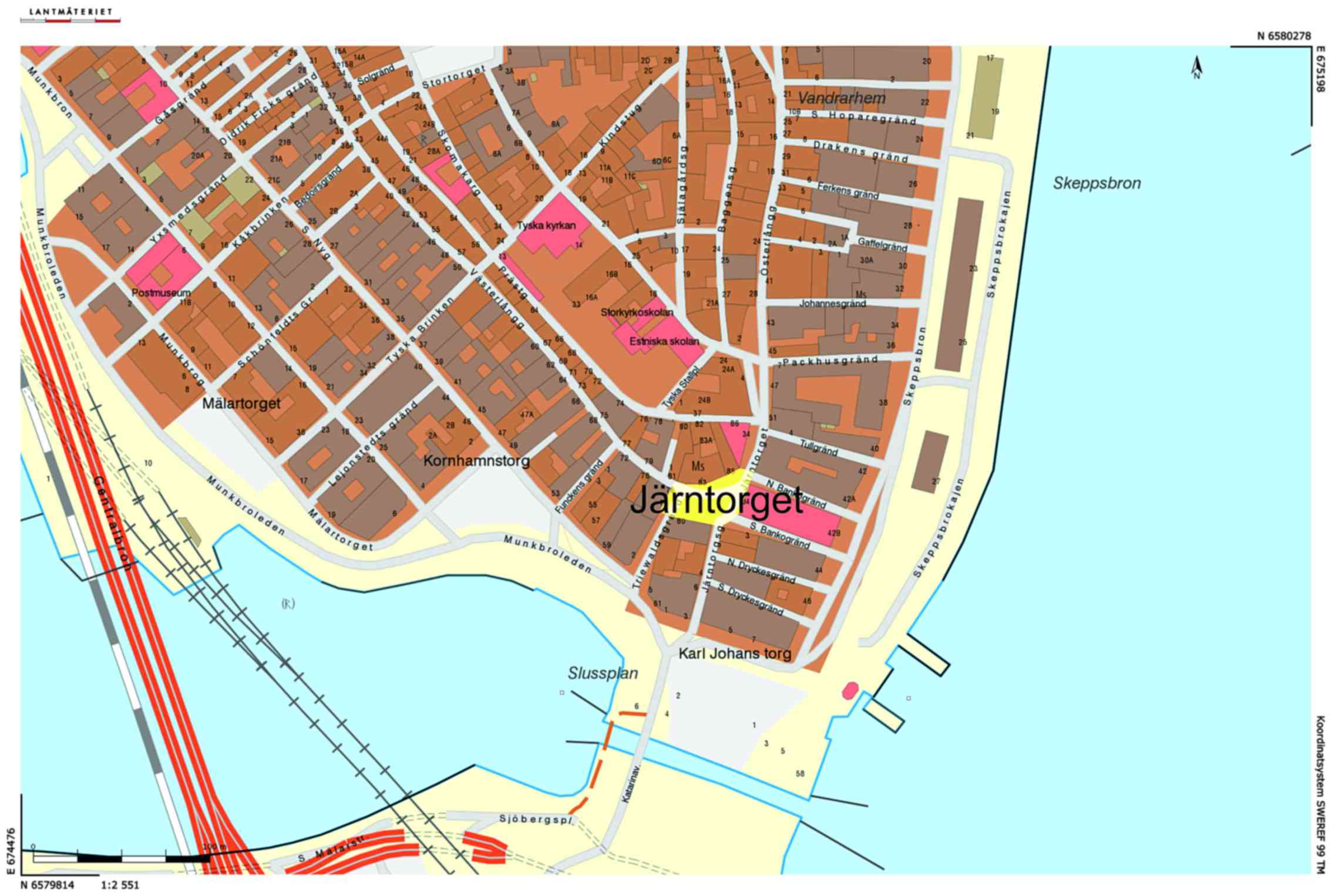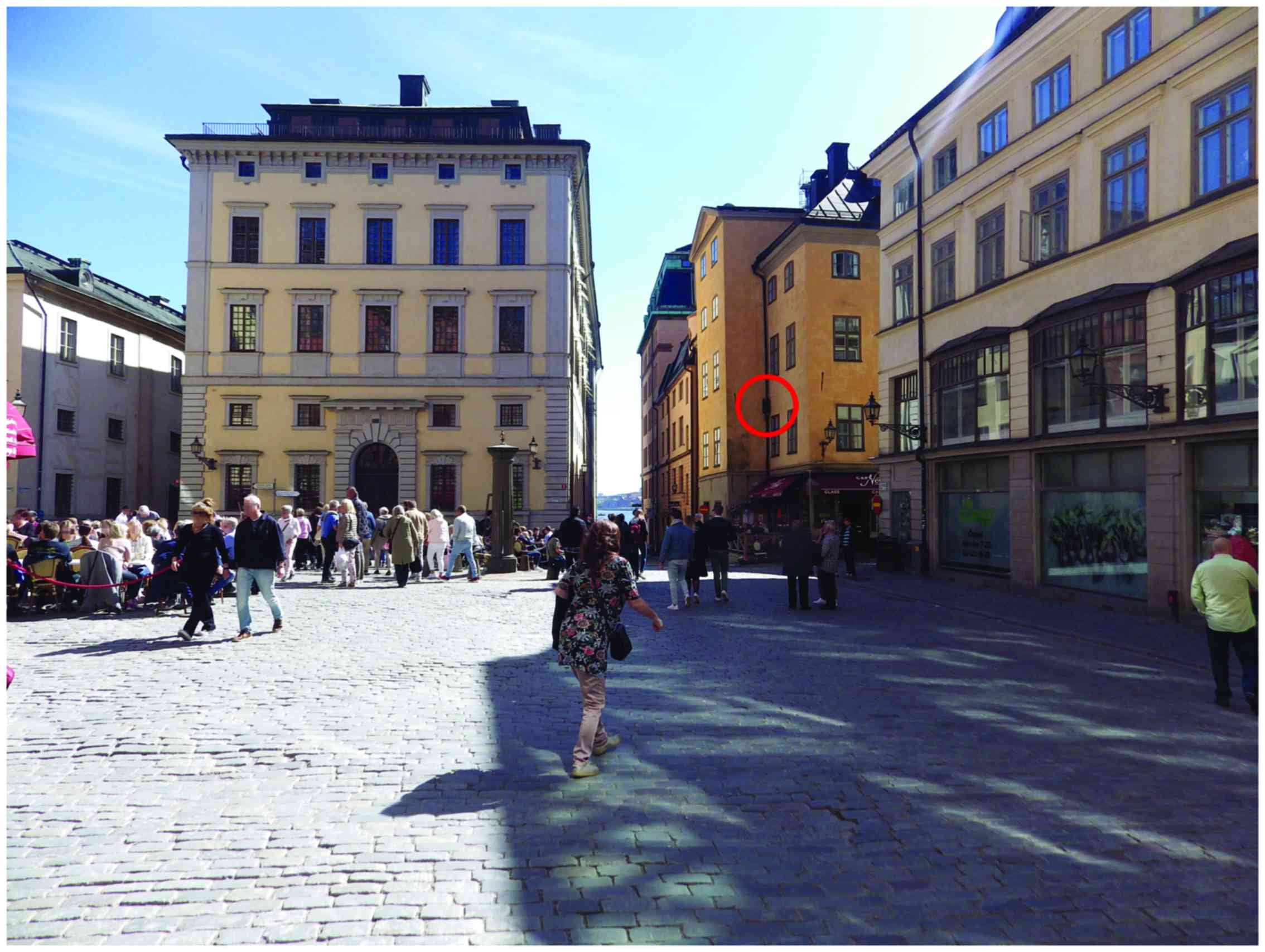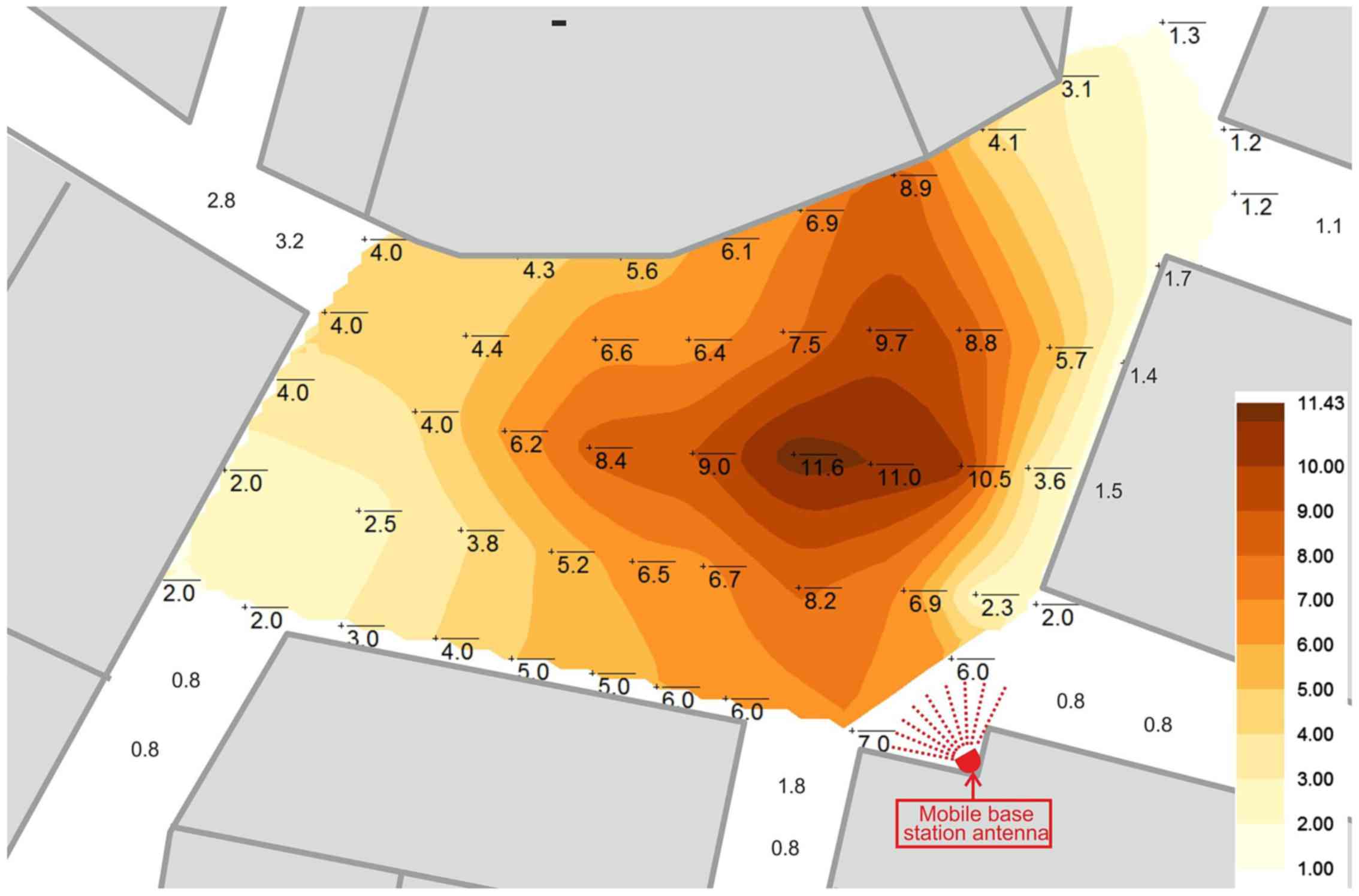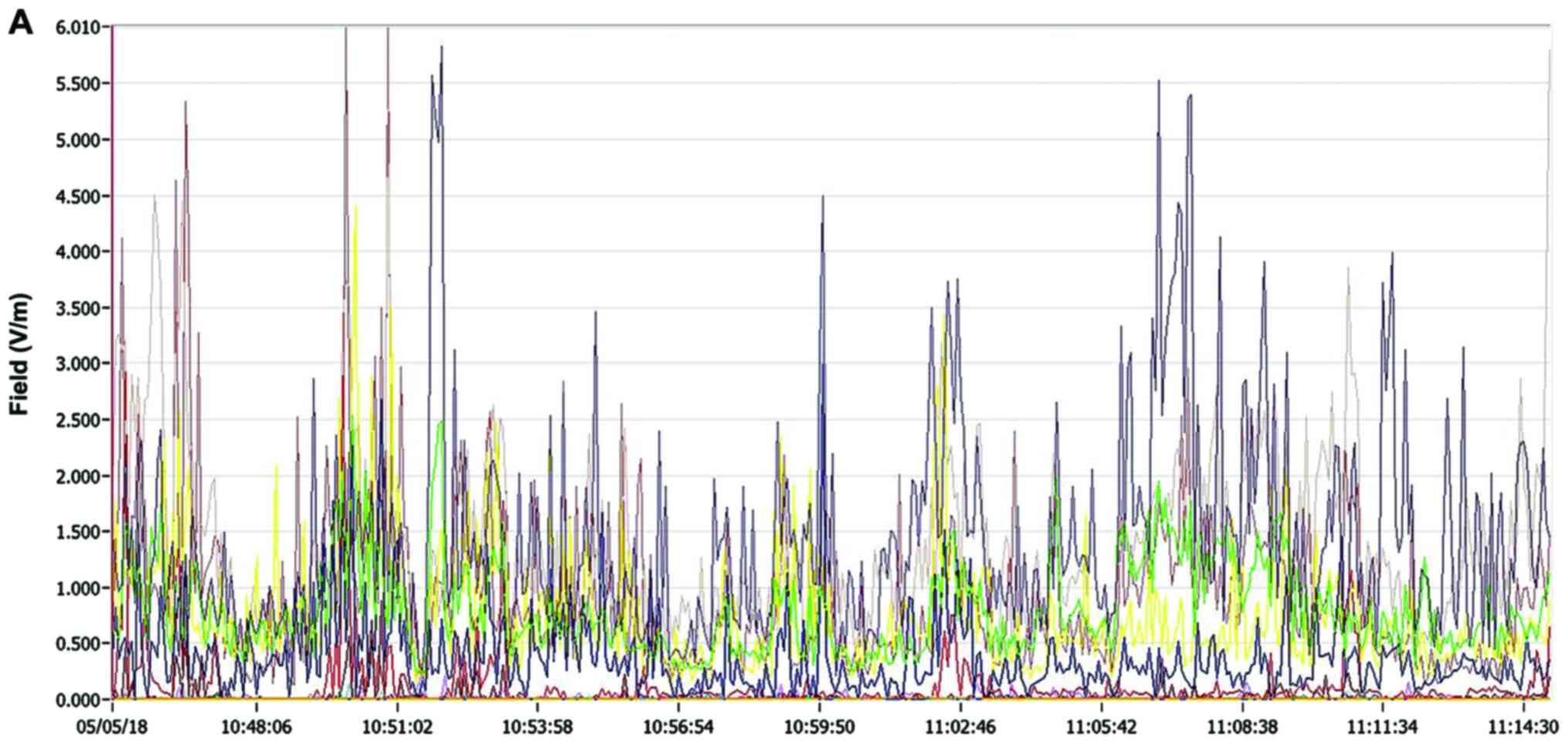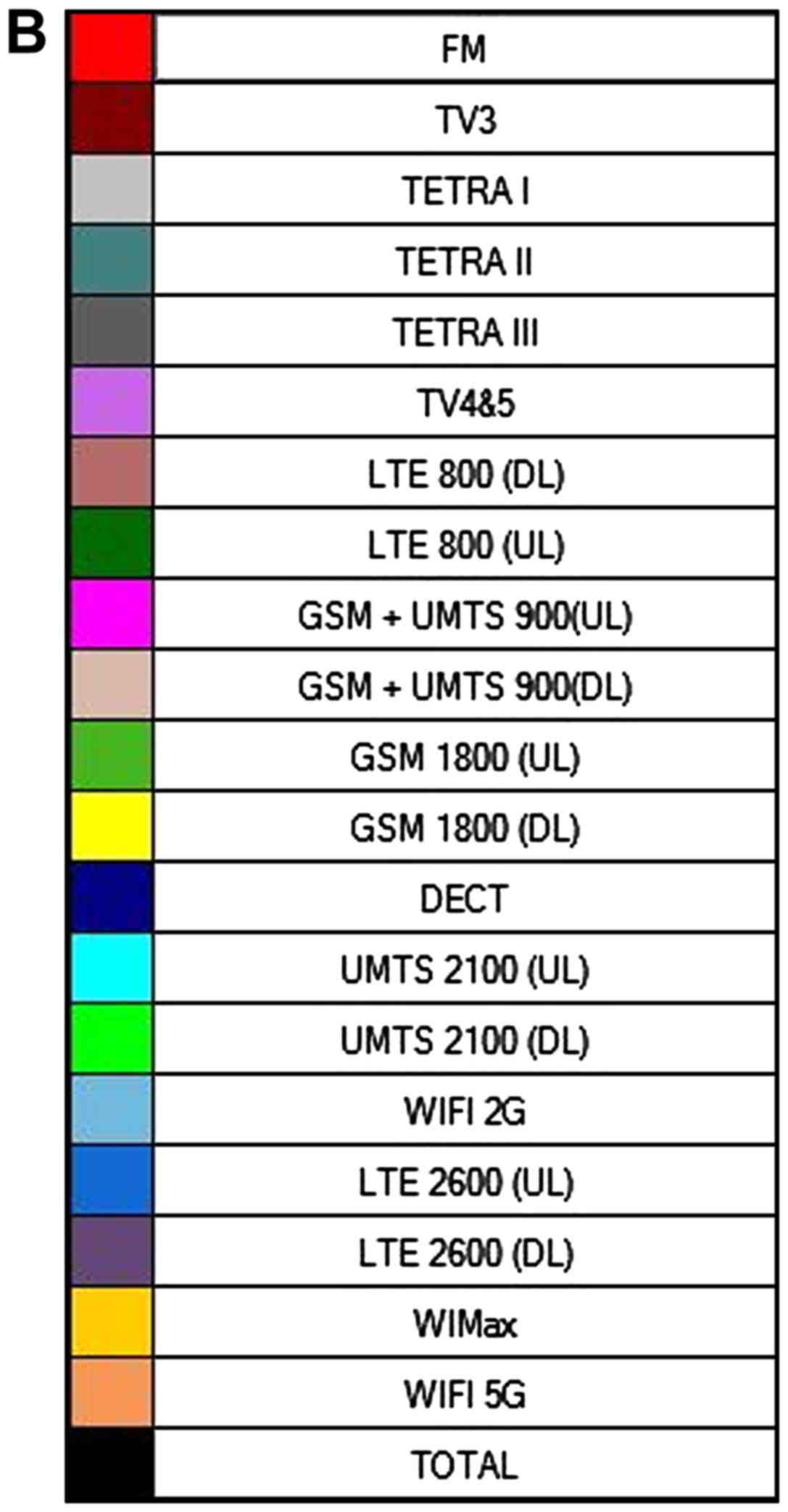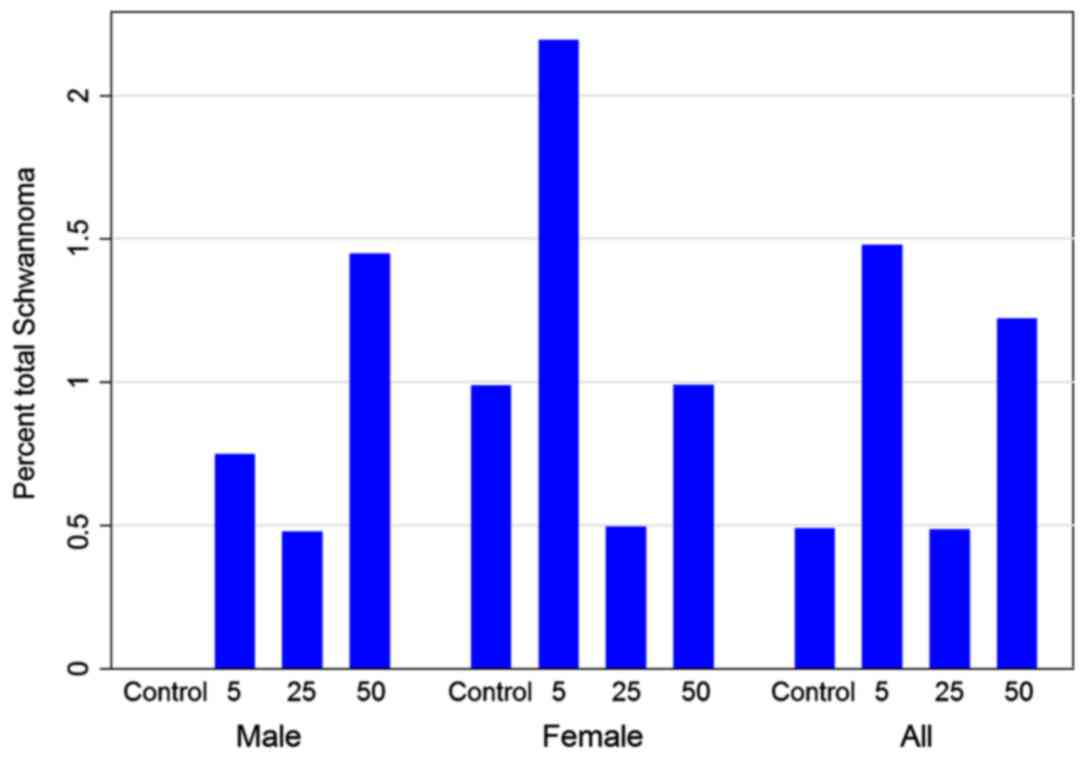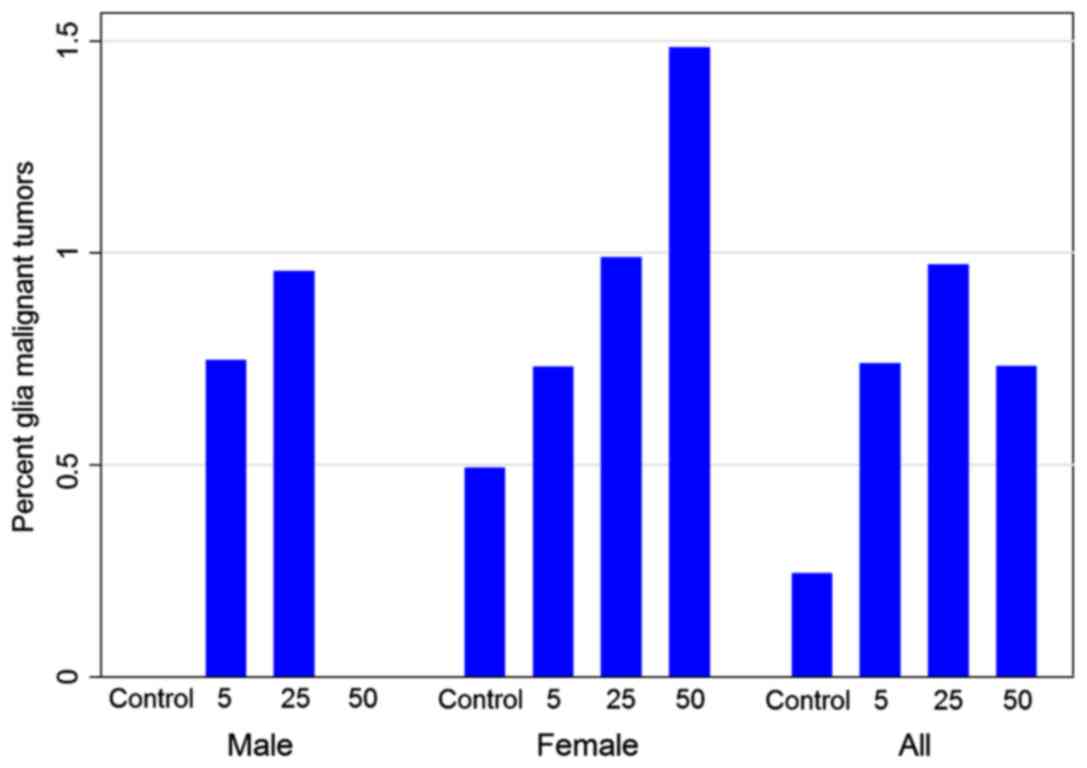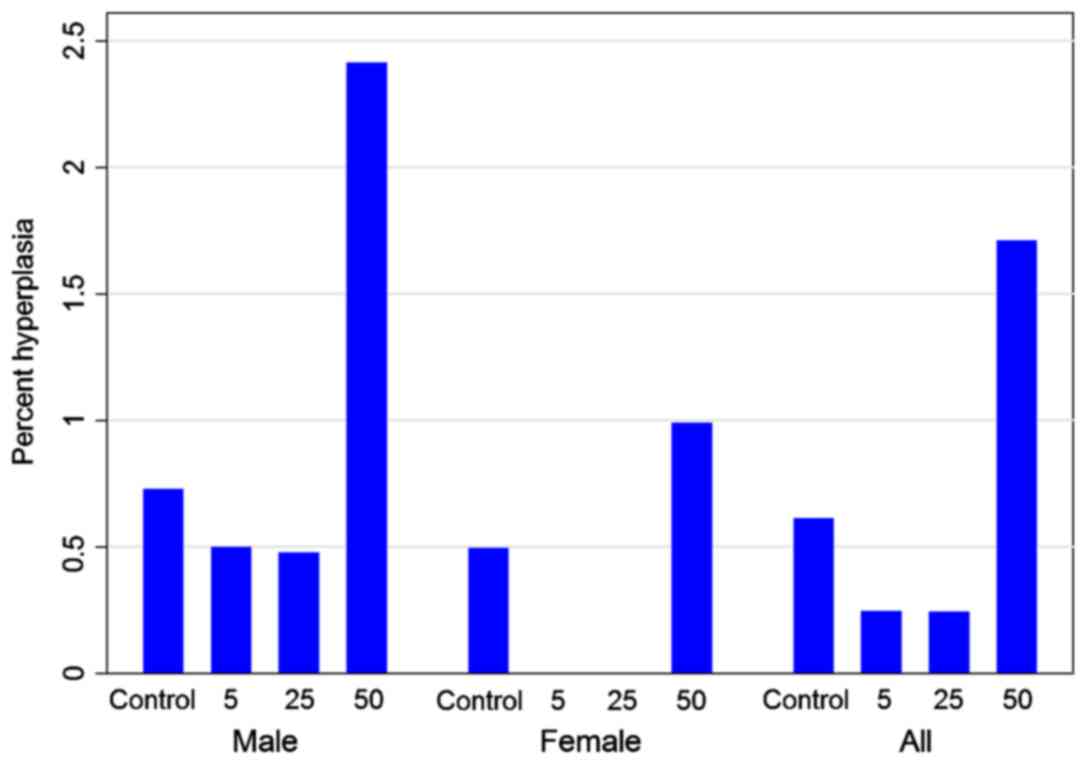|
1
|
Baan R, Grosse Y, Lauby-Secretan B, El
Ghissassi F, Bouvard V, Benbrahim-Tallaa L, Guha N, Islami F,
Galichet L and Straif K; WHO International Agency for Research on
Cancer Monograph Working Group: Carcinogenicity of radiofrequency
electromagnetic fields. Lancet Oncol. 12:624–626. 2011.PubMed/NCBI
|
|
2
|
IARC Monographs on the Evaluation of
Carcinogenic Risks to Humans. In: Non-Ionizing Radiation, Part 2:
Radiofrequency Electromagnetic Fields. Vol 102:Lyon. (France:
International Agency for Research on Cancer 2013). http://monographs.iarc.fr/ENG/Monographs/vol102/mono102.pdfAccessed
October 30. 2018.PubMed/NCBI
|
|
3
|
Starkey SJ: Inaccurate official assessment
of radiofrequency safety by the Advisory Group on Non-ionising
Radiation. Rev Environ Health. 31:493–503. 2016.PubMed/NCBI View Article : Google Scholar
|
|
4
|
Hardell L: World Health Organization,
radiofrequency radiation and health - a hard nut to crack (Review).
Int J Oncol. 51:405–413. 2017.PubMed/NCBI View Article : Google Scholar
|
|
5
|
The 5G appeal: Scientists and doctors warn
of potential serious health effects of 5G. http://www.5gappeal.eu/scientists-and-doctors-warn-of-potential-serious-health-effects-of-5g/.
Accessed October 30. 2018
|
|
6
|
Törnevik C: Impact of EMF limits on 5G
networkr oll-out. ITU Workshop on 5G, EMF & Health, Warsaw,
December 5th 2017. https://www.itu.int/en/ITU-T/Workshops-and-Seminars/20171205/Documents/S3_Christer_Tornevik.pdf.
Accessed October 30. 2018
|
|
7
|
Belpomme D, Hardell L, Belyaev I, Burgio E
and Carpenter DO: Thermal and non-thermal health effects of low
intensity non-ionizing radiation: An international perspective.
Environ Pollut. 242:643–658. 2018.PubMed/NCBI View Article : Google Scholar
|
|
8
|
Hardell L, Koppel T, Carlberg M, Ahonen M
and Hedendahl L: Radiofrequency radiation at Stockholm Central
Railway Station in Sweden and some medical aspects on public
exposure to RF fields. Int J Oncol. 49:1315–1324. 2016.PubMed/NCBI View Article : Google Scholar
|
|
9
|
Hardell L, Carlberg M, Koppel T and
Hedendahl L: High radiofrequency radiation at Stockholm Old Town:
An exposimeter study including the Royal Castle, Supreme Court,
three major squares and the Swedish Parliament. Mol Clin Oncol.
6:462–476. 2017.PubMed/NCBI View Article : Google Scholar
|
|
10
|
Hardell L, Carlberg M and Hedendahl LK:
Radiofrequency radiation from nearby base stations gives high
levels in an apartment in Stockholm, Sweden: A case report. Oncol
Lett. 15:7871–7883. 2018.PubMed/NCBI View Article : Google Scholar
|
|
11
|
Carlberg M, Hedendahl LK, Koppel T and
Hardell L: High ambient radiofrequency radiation in Stockholm city,
Sweden. Oncol Lett (In press). PubMed/NCBI View Article : Google Scholar
|
|
12
|
National Toxicology Program: NTP technical
report on the toxicology and carcinogenesis studies in Hsd:Sprague
Dawley sd rats exposed to whole-body radio frequency radiation at a
frequency (900 MHz) and modulations (GSM and CDMA) used by cell
phonesNTP TR 595, March 26-28, 2018. https://ntp.niehs.nih.gov/ntp/about_ntp/trpanel/2018/march/tr595peerdraft.pdf.
Accessed October 30. 2018.
|
|
13
|
National Toxicology Program: NTP technical
report on the toxicology and carcinogenesis studies in B6C3F1/N
mice exposed to whole-body radio frequency radiation at a frequency
(1,900 MHz) and modulations (GSM and CDMA) used by cell phones. NTP
TR 596, March 26-28, 2018. Available from. https://ntp.niehs.nih.gov/ntp/about_ntp/trpanel/2018/march/tr596peerdraft.pdf.
Accessed October 30. 2018.
|
|
14
|
Hardell L and Carlberg M: Comments on the
US National Toxicology Program technical reports on toxicology and
carcinogenesis study in rats exposed to whole-body radiofrequency
radiation at 900 MHz and in mice exposed to whole-body
radiofrequency radiation at 1,900 MHz. Int J Oncol:. 54:111–127.
2019.PubMed/NCBI View Article : Google Scholar
|
|
15
|
Hardell L, Carlberg M, Söderqvist F and
Mild KH: Pooled analysis of case-control studies on acoustic
neuroma diagnosed 1997-2003 and 2007-2009 and use of mobile and
cordless phones. Int J Oncol. 43:1036–1044. 2013.PubMed/NCBI View Article : Google Scholar
|
|
16
|
Carlberg M and Hardell L: Evaluation of
mobile phone and cordless phone use and glioma risk using the
Bradford Hill viewpoints from 1965 on association or causation.
BioMed Res Int 2017. (9218486)2017.PubMed/NCBI View Article : Google Scholar
|
|
17
|
Falcioni L, Bua L, Tibaldi E, Lauriola M,
De Angelis L, Gnudi F, Mandrioli D, Manservigi M, Manservisi F,
Manzoli I, et al: Report of final results regarding brain and heart
tumors in Sprague-Dawley rats exposed from prenatal life until
natural death to mobile phone radiofrequency field representative
of a 1.8 GHz GSM base station environmental emission. Environ Res.
165:496–503. 2018.PubMed/NCBI View Article : Google Scholar
|
|
18
|
Nittby H, Brun A, Eberhardt J, Malmgren L,
Persson BR and Salford LG: Increased blood-brain barrier
permeability in mammalian brain 7 days after exposure to the
radiation from a GSM-900 mobile phone. Pathophysiology. 16:103–112.
2009.PubMed/NCBI View Article : Google Scholar
|
|
19
|
Eberhardt JL, Persson BR, Brun AE, Salford
LG and Malmgren LO: Blood-brain barrier permeability and nerve cell
damage in rat brain 14 and 28 days after exposure to microwaves
from GSM mobile phones. Electromagn Biol Med. 27:215–229.
2008.PubMed/NCBI View Article : Google Scholar
|
|
20
|
Lin JC: Safety standards for human
exposure to radio frequency radiation and their biological
rationale. IEEE Microw Mag. 4:22–26. 2003.
|
|
21
|
Khurana VG, Hardell L, Everaert J,
Bortkiewicz A, Carlberg M and Ahonen M: Epidemiological evidence
for a health risk from mobile phone base stations. Int J Occup
Environ Health. 16:263–267. 2010.PubMed/NCBI View Article : Google Scholar
|
|
22
|
Levitt BB and Lai H: Biological effects
from exposure to electromagnetic radiation emitted by cell tower
base stations and other antenna arrays. Environ Rev. 18:369–395.
2010. View
Article : Google Scholar
|
|
23
|
Elliott P, Toledano MB, Bennett J, Beale
L, de Hoogh K, Best N and Briggs DJ: Mobile phone base stations and
early childhood cancers: Case-control study. BMJ.
340(c3077)2010.PubMed/NCBI View Article : Google Scholar
|
|
24
|
Dode AC, Leão MM, Tejo FA, Gomes AC, Dode
DC, Dode MC, Moreira CW, Condessa VA, Albinatti C and Caiaffa WT:
Mortality by neoplasia and cellular telephone base stations in the
Belo Horizonte municipality, Minas Gerais state, Brazil. Sci Total
Environ. 409:3649–3665. 2011.PubMed/NCBI View Article : Google Scholar
|
|
25
|
Stewart A, Rao JN, Middleton JD, Pearmain
P and Evans T: Mobile telecommunications and health: Report of an
investigation into an alleged cancer cluster in Sandwell, West
Midlands. Perspect Public Health. 132:299–304. 2012.PubMed/NCBI View Article : Google Scholar
|
|
26
|
Satta G, Mascia N, Serra T, Salis A, Saba
L, Sanna S, Zucca MG, Angelucci E, Gabbas A, Culurgioni F, et al:
Estimates of Environmental Exposure to Radiofrequency
Electromagnetic Fields and Risk of Lymphoma Subtypes. Radiat Res.
189:541–547. 2018.PubMed/NCBI View Article : Google Scholar
|
|
27
|
Buchner K and Eger H: Changes of
clinically important neurotransmitters under the influence of
modulated RF fields-A long-term study under real-life conditions.
Umwelt-Medizin-Gesellschaft. 24:44–57. 2011.(In German).
|
|
28
|
Augner C, Hacker GW, Oberfeld G, Florian
M, Hitzl W, Hutter J and Pauser G: Effects of exposure to GSM
mobile phone base station signals on salivary cortisol,
alpha-amylase, and immunoglobulin A. Biomed Environ Sci.
23:199–207. 2010.PubMed/NCBI View Article : Google Scholar
|
|
29
|
Eskander EF, Estefan SF and Abd-Rabou AA:
How does long term exposure to base stations and mobile phones
affect human hormone profiles? Clin Biochem. 45:157–161.
2012.PubMed/NCBI View Article : Google Scholar
|
|
30
|
Gandhi G, Kaur G and Nisar U: A
cross-sectional case control study on genetic damage in individuals
residing in the vicinity of a mobile phone base station.
Electromagn Biol Med. 34:344–354. 2015.PubMed/NCBI View Article : Google Scholar
|
|
31
|
Zothansiama ZM, Zosangzuali M,
Lalramdinpuii M and Jagetia GC: Impact of radiofrequency radiation
on DNA damage and antioxidants in peripheral blood lymphocytes of
humans residing in the vicinity of mobile phone base stations.
Electromagn Biol Med. 36:295–305. 2017.PubMed/NCBI View Article : Google Scholar
|



